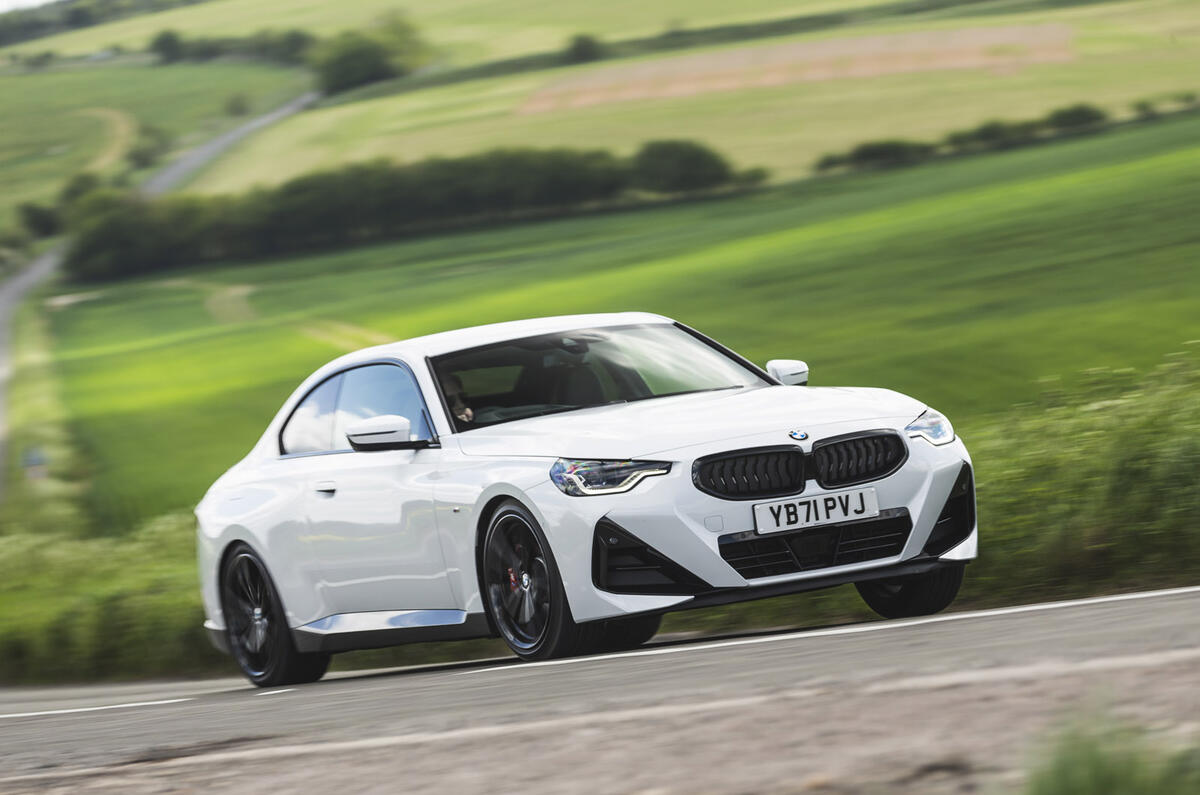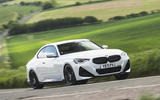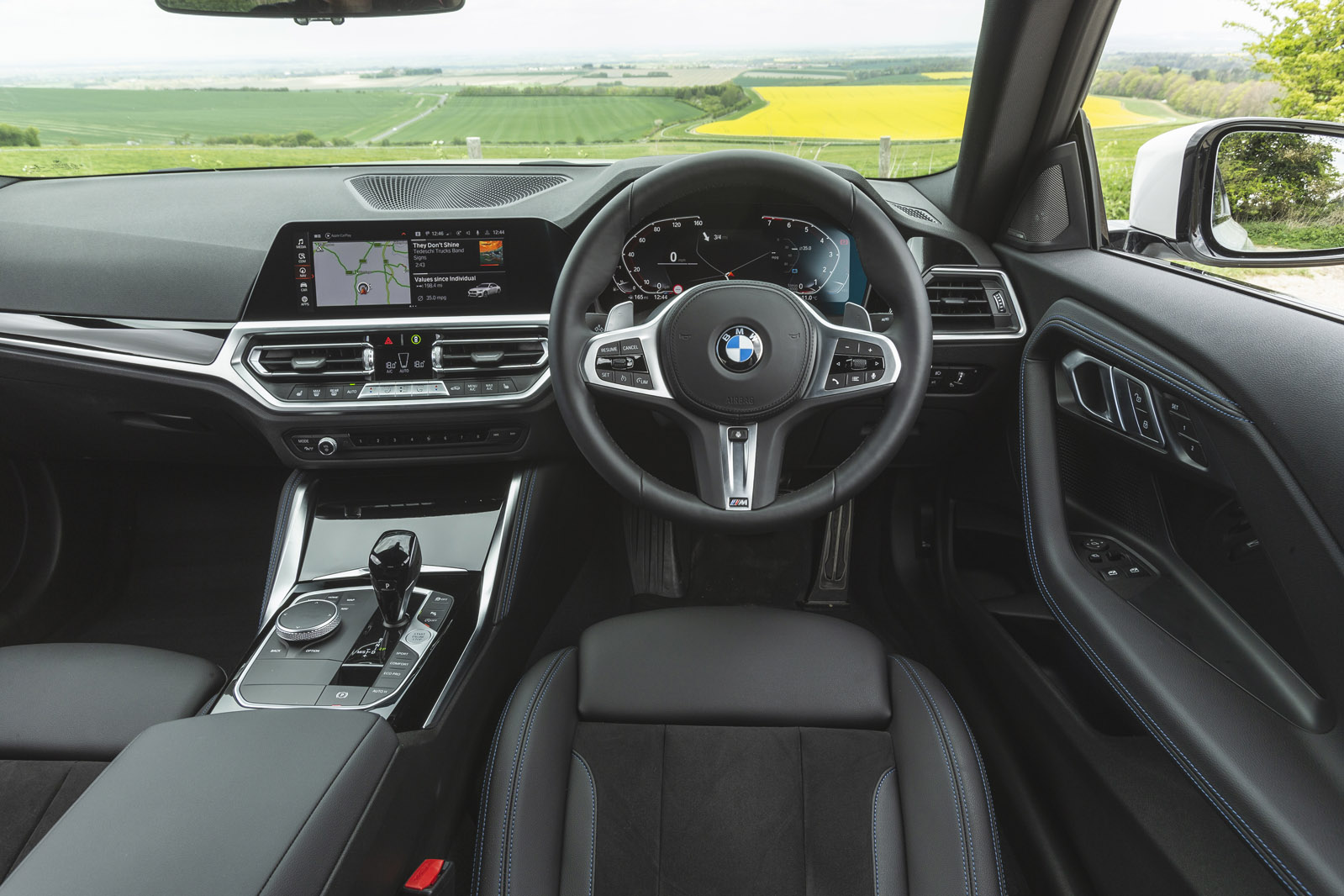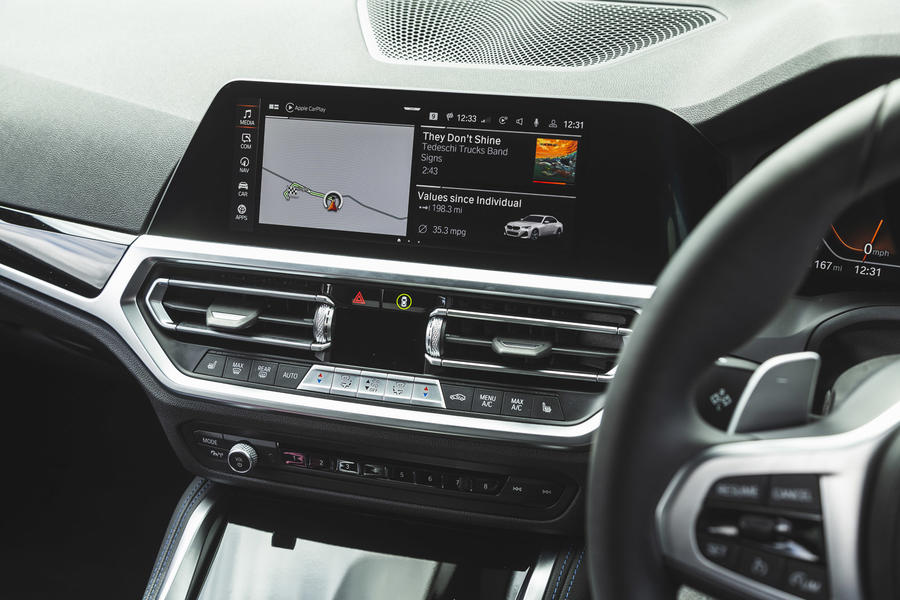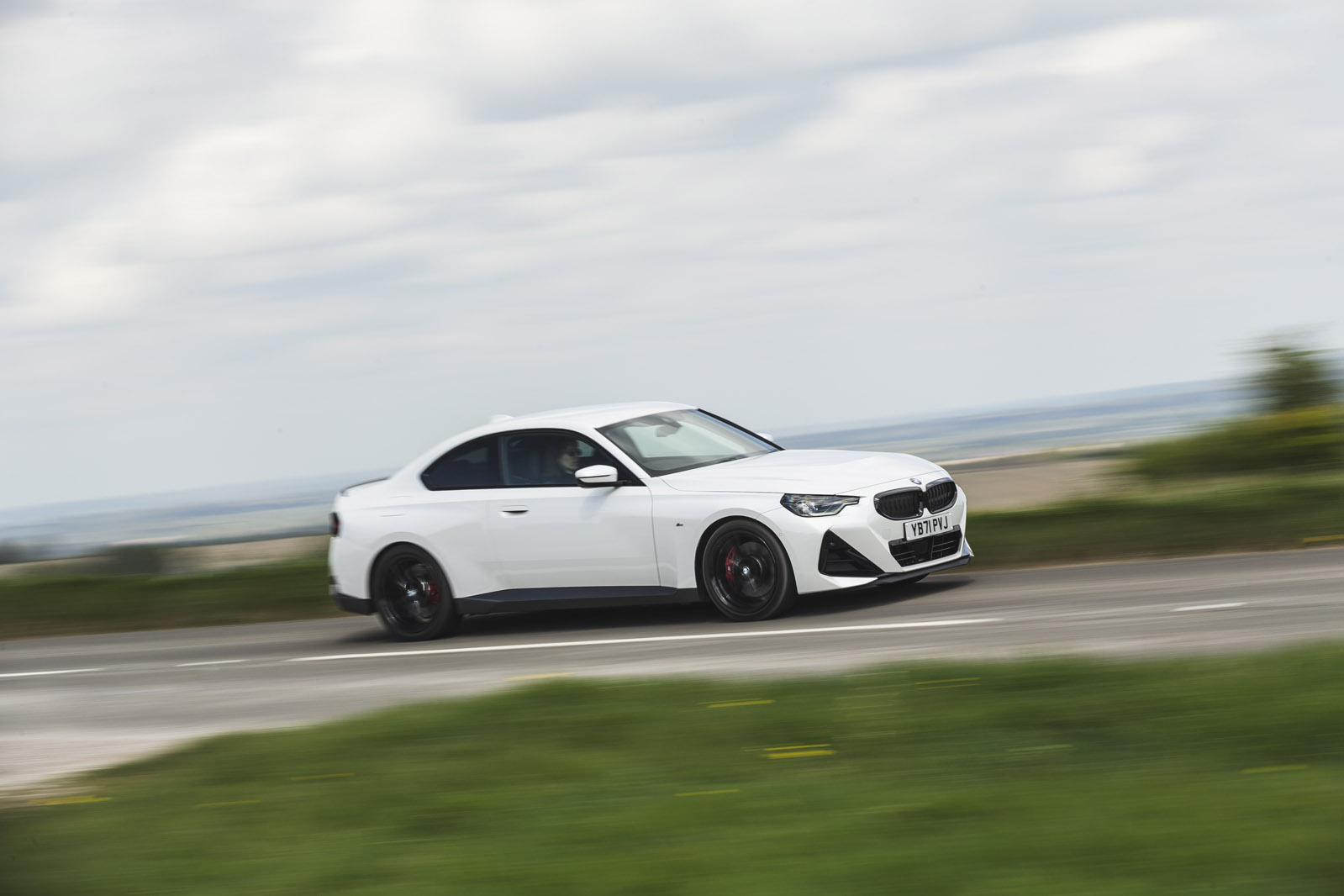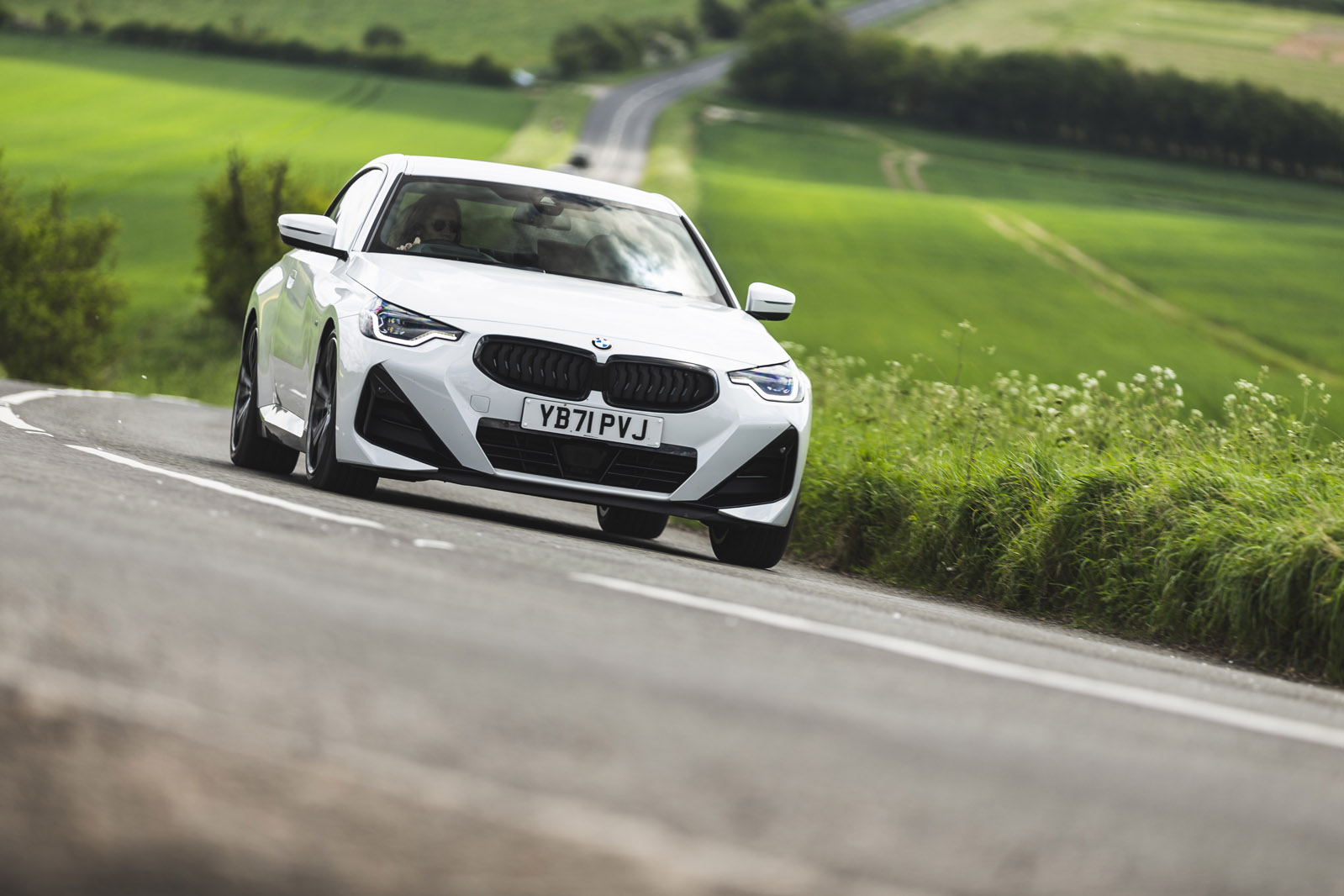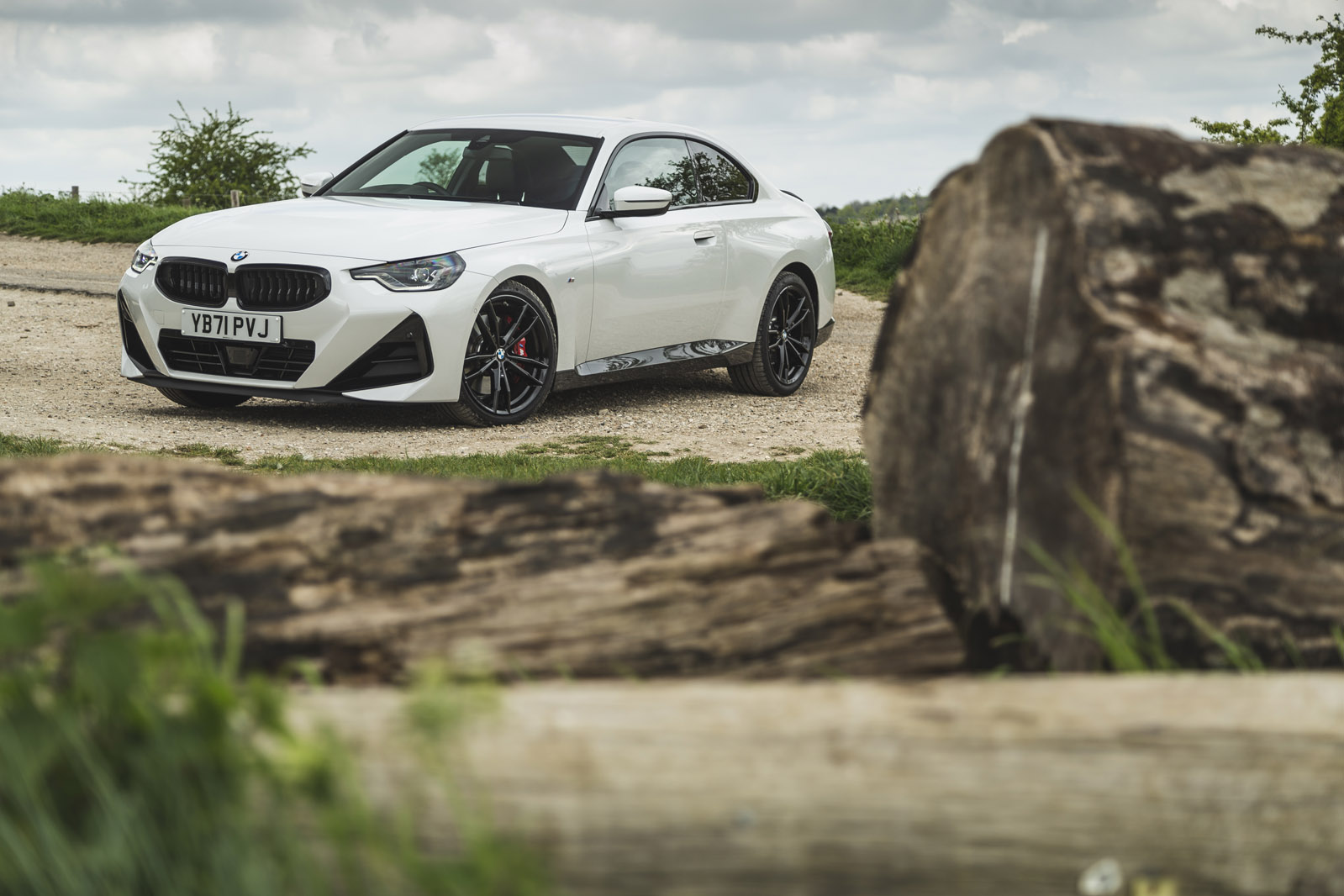With that said, it’s not the last word in feedback. For a modern steering rack it’s about average, with reassuring weight and a decent sensation of when the front axle is loaded up, but there are more talkative steering systems out there. There is a Sport mode that adds artificial weight but no feedback.
As is often the case with BMWs that aren’t full-fat M cars, the 2 Series does have its limitations, though. Through some medium-fast corners, the front axle can feel like there are some rubber bushes that need a fraction of a second to settle laterally. The car is gripping, but it just saps 5% of your confidence.
Comfort and isolation
The other area where the 220i lacks some sophistication is in the ride. In the UK, the Coupé always comes as an M Sport and BMW doesn’t offer adaptive dampers on the four-cylinder models. It probably should, because its passive M Sport set-ups have a habit of dealing with uneven roads slightly clumsily.
Over bigger bumps, the suspension can’t control the body’s mass with the insouciance of some Jaguars or even some adaptively damped BMWs. It means the big up-down motions are more clearly felt.
Meanwhile, the 19in wheels can crash through potholes and the ride feels permanently unsettled and jittery over bad surfaces. It’s not that the suspension is too stiff – it’s appropriate for a sporty coupé – but you might hope for a bit more control.
It’s not unbearable for the daily grind: a lot of hot hatches will beat you up more and the excellent seat comfort compensates for a lot. The padding is quite firm but very supportive and there are few cars that offer more adjustment to the driving position.
Noise refinement is somewhat disappointing, too: 69dBA at 70mph is poor for this class. Subjectively it doesn’t feel quite as bad as that, and the Harman Kardon audio system easily drowns out a lot of the road roar generated by the rear tyres.
On the whole, the 220i isn’t an uncomfortable car as such, but we do expect better from BMW.
Track notes
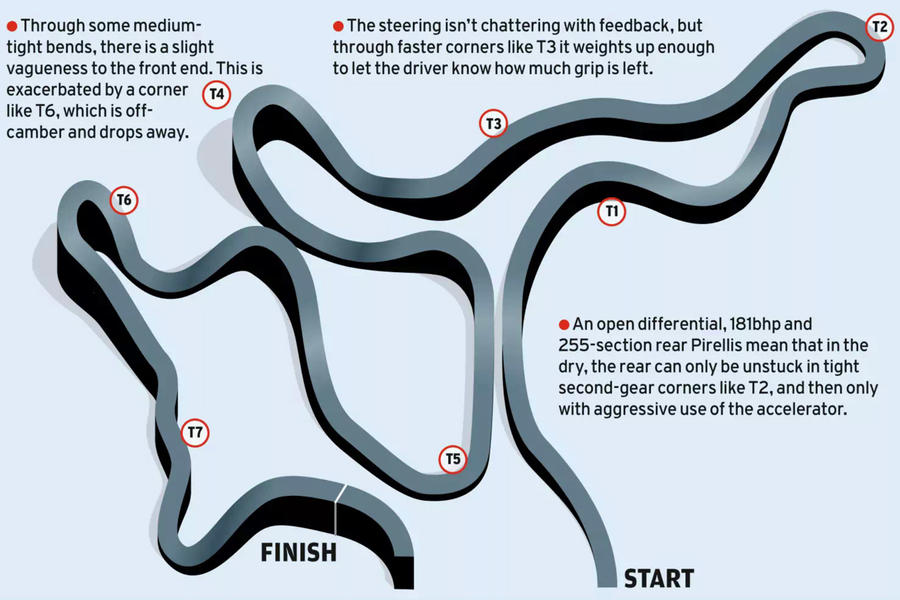
If anything demonstrated that the almost mechanically identical but slightly more powerful 230i would be a worthwhile upgrade over the 220i, it was a few laps of the Millbrook Hill Route.
On this challenging course, the 220i feels underpowered and overtyred. It’s not slow per se, but it also doesn’t exactly rocket up the steep slopes, suggesting that mountain driving won’t be as effortless or breathtakingly exciting as the car’s exterior suggests.
The 220i also doesn’t have the grunt to easily overpower the driven wheels in the dry. We suspect having identical tyres front and rear, rather than the staggered set-up that is standard in the UK, would unlock some more of the car’s inherent balance. In faster corners, the 220i tends towards mild understeer, but a lift of the throttle will neatly tuck the nose in.


